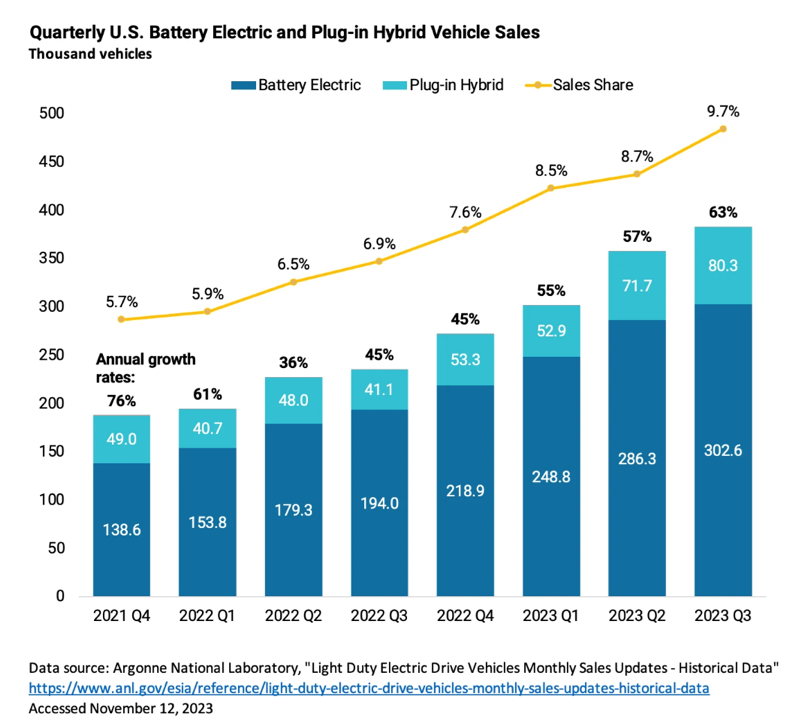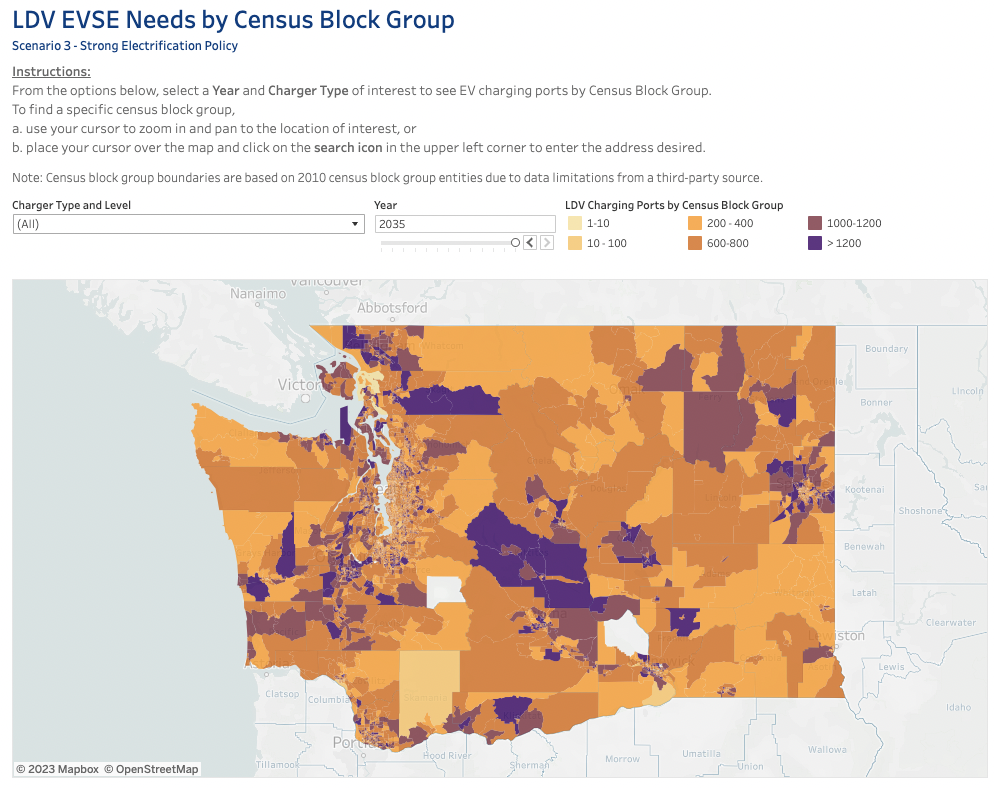
Electrification 101: How RMI’s New Tool Can Help Utilities Proactively Plan for EVs
GridUp will forecast energy and power demand from electric vehicles, enabling utilities and regulators to proactively prepare the grid for the growth in EVs.
The Electrification 101 series explores the challenges and opportunities that a rapidly electrifying transportation sector presents for the power grid, offering solutions to support proactive grid planning for oncoming EV charging needs. This is the second article in the series, read the first here.
Over the past 30 years, US electricity demand has remained relatively flat — generally, new end uses (adding load) and improved efficiency (reducing load) have roughly canceled each other out. But with electric vehicles and other end uses emerging, more demand is coming.
American drivers are rapidly choosing to go electric. Despite some misleading headlines, automakers have sold more EVs every quarter since 2021, and that growth is likely to continue. Individual buyers and corporate and government fleets purchases — enabled by supportive policy, regulation, and incentives — have driven new sales of EVs to a tipping point. By 2030, we expect to see fully electrified fleets and, by 2035, EV’s comprising 100 percent of vehicles sales in some states.
Understandably, we have not built today’s US electric grid to rapidly replace the fossil fuel-based vehicle fueling infrastructure. However, with continued exponential growth in electric vehicle ownership and use, doing so has become increasingly urgent. Unfortunately, though, to plan for the grid of tomorrow, today’s grid planning processes must change from reactive to proactive to ensure that the grid is ready when the vehicles arrive. To enable this, utility engineers and regulators need access to better modeling and data of anticipated load from vehicle electrification. This will help them to accurately plan and build infrastructure to serve this load in a timely manner while simultaneously minimizing any cost to electricity users.
Updating How Utilities and Regulators Plan
Today, utilities propose, and regulators approve, grid investments reactively. Utilities only propose projects when customers (e.g., a new subdivision or a new factory) have committed to new demand. Regulators defined this reactive process because it helped control costs in a world where demand was flat or only slowly increasing and where new demands came online with a long timeline (it takes years to build a new subdivision or a new factory). However, EV loads will come quickly, often as a response to policy mandates, meaning grid planning needs to be done in anticipation of this new load. For example, logistics companies can commission new truck fleets and charging hubs in a matter of months but, if the paradigm of reactive planning remains, will likely need to wait years to connect to the grid.
Today’s infrastructure planning process evolved out of the need for regulators to have reasonable oversight of utility capital expenditure investments. To prevent utilities from overbuilding infrastructure, and overcharging customers, regulators often try to reduce the amount of investment the utilities can rate-base and profit from. Regulators want to be as certain as possible that investment in building new grid infrastructure will promptly result in new customers and load on the system. This process aims to ensure ratepayers don’t experience unnecessary shocks in rate costs and that utilities are making least-cost investment decisions and not overbuilding the grid in pursuit of risk-free profit. To shift out of today’s planning paradigm into a process that can more proactively prepare our grid for rapid load growth from electrification, regulators and utilities need a new method of being confident that new grid infrastructure for electrification will be utilized.
Enter GridUp
Using existing data on vehicle stock, driving patterns, and charging behaviors, we can model the anticipated power and energy demand from different EV market penetration scenarios. RMI’s forthcoming GridUp tool will do exactly this. By providing geographically granular energy and power data to utilities and regulators, GridUp will enable these stakeholders to assess when and where the grid will need upgrades. This sort of modeled future planning is not new to many utilities’ planning processes. Utilities that own generation assets, also known as vertically integrated utilities, plan generation infrastructure a decade or more in advance using integrated resource plans (IRPs) that regulators review. GridUp intends to apply an approach to enable investments in assets to meet demand similar to how IRPs plan for supply. Through the use of the public data in the GridUp tool, both utilities and regulators can assess forthcoming grid needs and begin planning infrastructure to meet that load in anticipation of rapid transportation electrification.
Not only will GridUp allow utilities and regulators to see what power and energy demand will look when all electrifiable vehicles go electric, but the tool will also provide data on the evolution of the expected power and energy demand from vehicles over the next two decades. Users will be able to explore implications on load from deployment of different charger types and in different economic scenarios. This improvement in load forecasting data will allow utilities to propose justifiable infrastructure projects to prepare for vehicle electrification and will allow regulators to review such proposed plans for prudency given the expected changes in load. Senate Bill 410, signed into California law this past October, enables utilities in the state to use this more proactive planning process for grid planning in an effort to prevent the grid from slowing down implementation of California’s decarbonization agenda.
Shifting utility infrastructure planning processes from reactive to proactive will not happen without resources and tools to ensure that regulators can carry out their duty to protect ratepayers from unnecessary increases in the cost of electricity. Utility regulators are tasked with ensuring these natural monopolies, utilities, are not abusing their lack of market competition to exploit customers. Equipping these regulators and policymakers with technical modeling and resources to pressure test proposed grid upgrades for vehicle electrification will ensure expedited grid planning to serve increasing loads from decarbonization does not lead to rate increases to consumers.
The GridUp tool and Electrification 101 article series are supported by a generous grant from FedEx.

